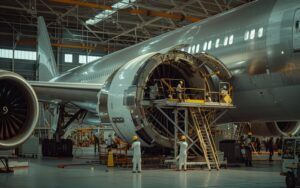
From Cars to Planes: The Impact of Lightweight Components
In our modern world of rising fuel costs and environmental concerns, we are always looking for ways to go faster, farther, and more efficiently. Reducing vehicle weight is a major focus on increasing performance while cutting emissions and operating costs. For vehicles like cars and planes, the use of lightweight components has had a tremendous impact. Let us take a look at how lighter materials have reshaped transportation industries over recent decades.
Punching Above Their Weight Class
You might not guess it but cutting just a few pounds from a vehicle can make a massive difference in performance and efficiency. Taking weight out reduces the energy needed to get that vehicle moving and keeping it cruising.
For automotive manufacturers, lightweight parts like aluminum engine blocks, composite body panels, and carbon fiber reinforced plastics offer big rewards. A lighter overall vehicle needs less fuel to operate and produces fewer emissions. Those slim downs add up to major cost savings over a car’s lifetime.
And in aviation, where heavyweight spells greater fuel burn, lightweight construction is absolutely vital. According to the experts at Axiom Materials, that’s why modern planes make heavy use of lightweight aluminum alloys, composites like carbon fiber, and advanced honeycomb core materials.
Going the Distance
Besides improving fuel efficiency, lightweight components also allow vehicles to go farther by reducing their energy needs. In the automotive world, this translates to longer ranges for electric vehicles between charges. For aircraft, it means extra range to fly farther without refueling stops.
Take the latest composite materials used on projects like the Boeing 787 Dreamliner. Their low weight but high strength allowed engineers to build the airliner with a higher percentage of lighter composites. That shaved off thousands of pounds compared to older aluminum designs, significantly boosting fuel efficiency and range.
Power to Weight
But lightweight materials do not just help vehicles use less energy, they also give more pep to whatever power is available. With less mass to move around, engines and motors can use more of their power output for acceleration rather than just hauling weight.
Speed freaks love lightweight parts like carbon ceramic brakes, which radically cut unsprung weight on performance cars for lightning-fast acceleration. Even heavyweight off-road trucks use lightweight alloy wheels and components to improve power-to-weight ratios and overall go-anywhere capability.
Dynamic Durability
You might think light automatically means flimsy and fragile. But many modern lightweight materials were created specifically to provide high strength along with low weight. After all, safety and durability can never be compromised for vehicles.
Advanced composites and alloys pull off this heavyweight strength through their special molecular structures and construction techniques. Honeycomb core materials create exceptionally rigid and impact-resistant structures at a fraction of the weight of solid components. Tech like that allows lightweight parts to shrug off punishing forces and conditions.
The Future Is Light
As demand for greater efficiency, range and performance continues rising, you can bet lightweight components will play an increasingly vital role. Aerospace titans are already developing aircraft built primarily from super-lightweight carbon nanotube composites. Automakers continue pushing innovative lightweight alloys and polymers.
The possibilities get even crazier when you bring in exotic materials originally developed for space travel and other extreme environments. Graphene aerogels, micro-lattice metals, and more may find their way into tomorrow’s extra-light, extra-strong, extra-efficient vehicles.
Conclusion
While lightweight components have already transformed cars, trucks, and aircraft over recent decades, the real lightweight revolution may have only just begun. As these advanced materials spread everywhere, we’ll all go farther than ever before on less energy. The future’s looking streamlined, powerful, and efficient.


